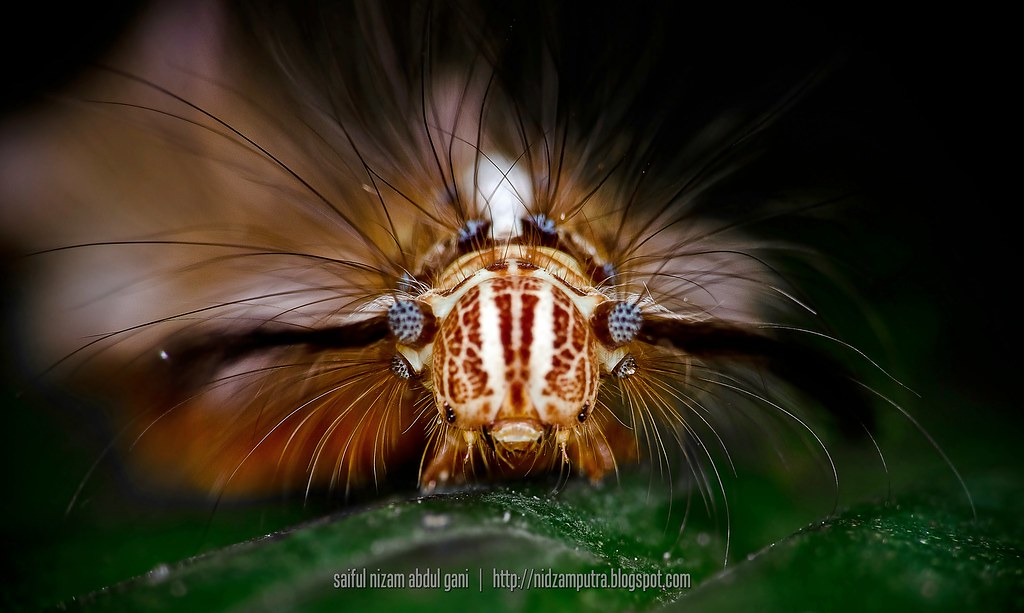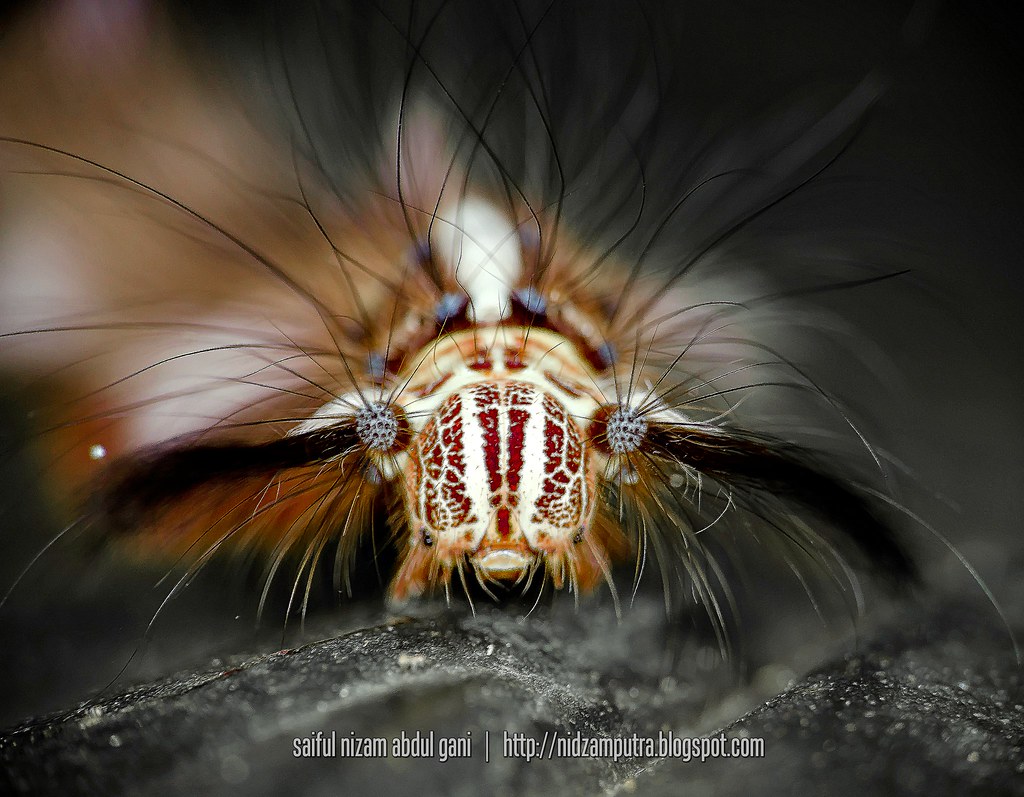Lymantriidae is a family of moths. Many of its component species are referred to as "Tussock moths" of one sort or another. The caterpillar, or larval, stage of these species often has a distinctive appearance of alternating bristles and haired projections. Like other families of moths, many Tussock Moth caterpillars have urticating hairs (often hidden among longer, softer hairs) which can cause painful reactions if they come into contact with skin.
The family Lymantriidae includes about 350 known genera and over 2,500 known species found all over the world, in every continent except Antarctica. They are particularly concentrated in sub-Saharan Africa, India, Southeast Asia and South America; one estimate lists 258 species in Madagascar alone (Schaefer, 1989). Apart from oceanic islands, notable places that do not host Lymantriids include New Zealand, the Antilles, and New Caledonia (Schaefer, 1989). Source : http://en.wikipedia.org/wiki/Lymantriidae
 |
| Camera - Nikon Model - D7000 Exposure - 1/125s Aperture - F14 Focal Length - 85mm + Raynox DCR250 ISO Value - 200 |
 |
| Camera - Nikon Model - D7000 Exposure - 1/100s Aperture - F11 Focal Length - 105mm + Raynox DCR250 ISO Value - 200 |
 |
| Camera - Nikon Model - D7000 Exposure - 1/125s Aperture - F11 Focal Length - 105mm + Raynox DCR250 ISO Value - 200 |
 |
| Camera - Nikon Model - D7000 Exposure - 1/100s Aperture - F11 Focal Length - 105mm + Raynox DCR250 ISO Value - 100 |
The lower caterpillar is a Lasiocampidae/Lappet Moth, most probably from the genus Trabala.
ReplyDeleteLymantriinae is certainly correct!
ReplyDelete